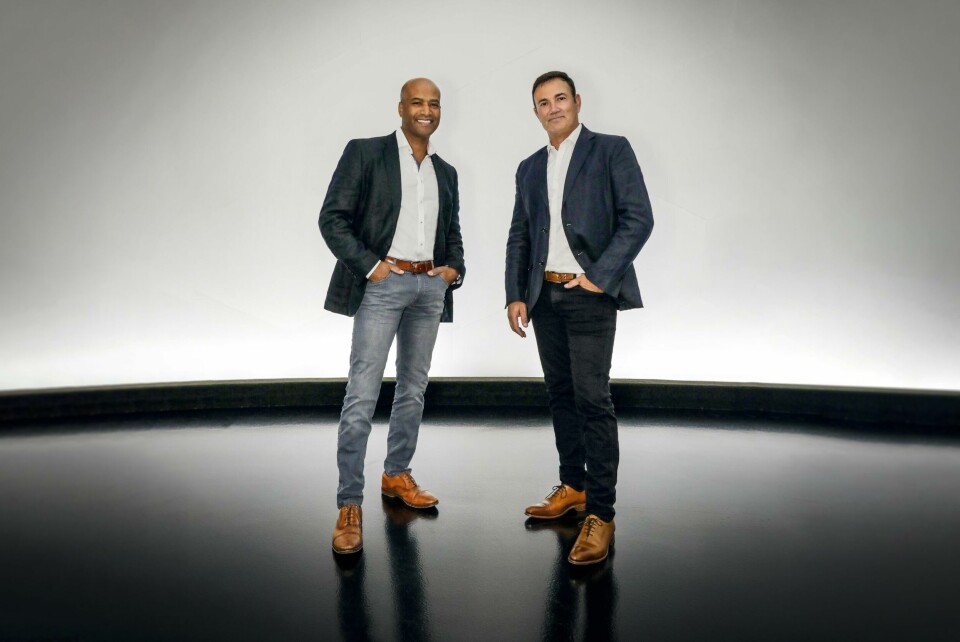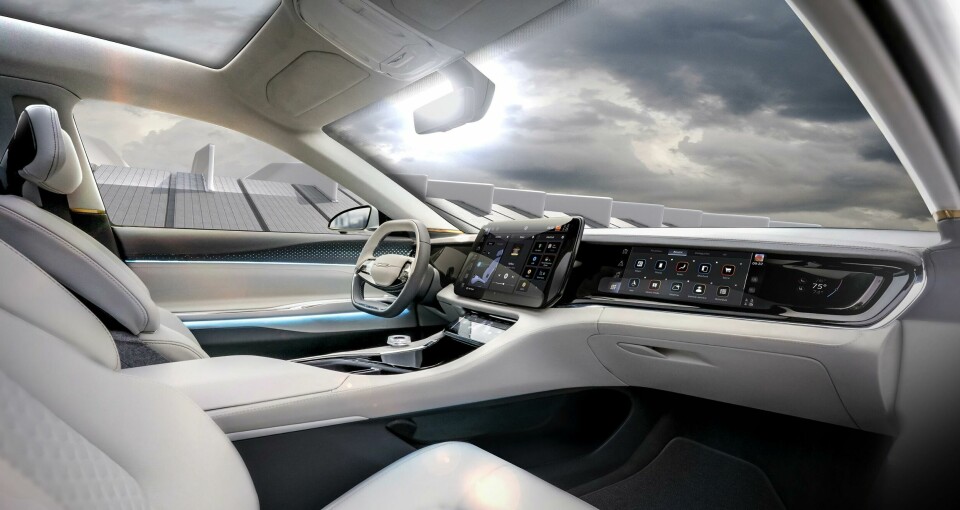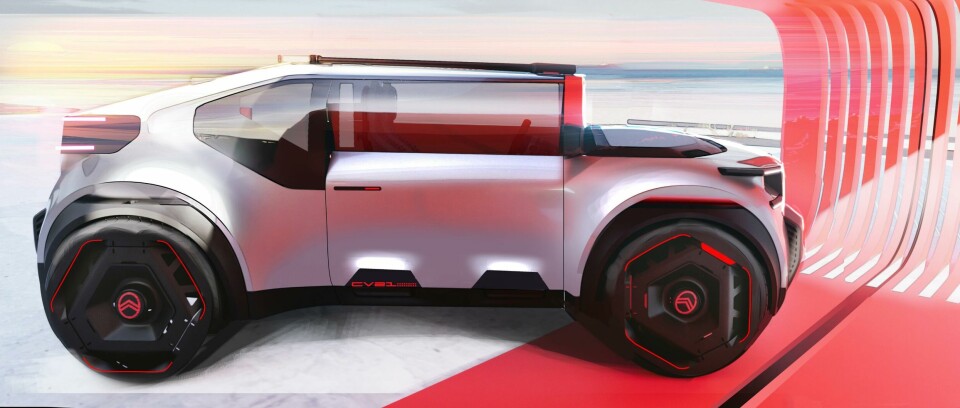
Car Design Review 9: Ralph Gilles & Jean-Pierre Ploué
“We were never as different before as we are going to be in the future”
The supergroup Stellantis was created from the merger of the Italian-American Fiat Chrysler Automobiles (FCA) and the French PSA Group in early 2021. This left 14 global car brands to manage covering mainstream, premium and 4x4 specialist areas, with many design directions to consider, maintain and improve.
Based in Michigan, former FCA design boss Ralph Gilles has taken responsibility for Stellantis’ US brands Chrysler, Dodge, Jeep and Ram plus Maserati and Mopar parts and service, while Jean Pierre Ploué oversees the bulk of the European ones – Alfa Romeo, Citroen, DS, Fiat, Lancia, Opel, Peugeot and Vauxhall – from bases in France and Italy. In the pages that follow we talk to both Gilles and Ploué about their often candid automotive hopes and dreams for their various storied brands.
How have the last 18 months been for you guys?
Jean Pierre Ploué (JPP): In work and in my private life, it has been an amazing 18 months. I have experience with French brands, but the chance to work on an Italian brand like Lancia was for me like a return to when I was a young designer at Renault and visiting Turin to work on concepts with coachbuilders like Bertone, Giugiaro and Coggiola. Coming back to Italy after all these years is a dream and with my family it’s a very nice change. The work challenge is huge and complicated, because we have a lot of pressure for the company to do things very quickly. But it’s a lot of fun too. We did relaunch work on Alfa Romeo and Fiat at the same time, building a new team and shaping the vision.
Ralph Gilles (RG): From my side it’s been a big change too. Jean-Pierre’s worked with [new Stellantis CEO] Carlos Tavares before the merger, so I’ve been adapting and understanding. He’s a career-long automotive CEO with an amazing understanding of automobiles, platforms and everything. That was really a reset button for us. I welcome Jean-Pierre because I was in his shoes before, travelling back and forth to Italy 12 times a year trying to manage that big, big job with all of these brands, projects and realities. Now Jean-Pierre can handle the European brands and I can focus on the rebuilding of our own vehicles. Almost every one we are working on is being electrified, but on a new platform. We’re stretching, redesigning and rethinking and creating brand new vehicles on the ‘Stella (STLA) Large’ platform, which is exciting, but takes a lot of focus.
“How often do you get a world-class designer to give you an opinion in private, versus after a show, when it’s too late?”
Can you give any specific examples of how the Stellantis merger has affected your brands and models?
RG: Yes, the first baby from the merger was our junior Jeep called Avenger. This vehicle was already on the drawing boards and was about to be put on one platform, but as soon as we connected with PSA, we found their platform was the better choice, much better proportions, more athletic. I have a small Jeep team in Italy, so we moved this vehicle to their platform, the new ‘Stella (STLA) Small’ platform, which is now a joint platform but at the time was a PSA one and it’s electrified as well. So it was a great accelerator to get to know each other and right away we found the teams worked really well together and the Jeep lost nothing in translation. In fact, it became better. So the Jeep Avenger is an amazing proof-positive that this Stellantis thing is working well. And where we found we overlapped, those have been consolidated and wonderful global leaders put in place. For example, for all of Stellantis Jean-Pierre’s team now runs the component side and I run the UX side.
JPP: In addition, we wanted to accelerate the synergies. We know we have to do it, even if the cultures and platforms are a little different. Now that they converge, we want to find important items to share. I would say maybe UX is the most important one for the future. We share that with Ralph who is in charge of it and all the physical elements – steering wheel, switches, external, seats and stuff – is led by my team. As you can imagine, that really pleases our CEO, because he is looking for this synergy. We want to transform this company to a tech company, and we have some resistance, but as soon as the big boss pushes, it happens.
RG: It’s rare in our industry that two healthy companies decide to merge. Usually there’s one in trouble and the other is really powerful and takes over. But we are sharing. At first it felt unnatural, like, ‘Whoa, am I supposed to show so much?’ But what I’ve found out is that this merger has released the brands to be more unique than ever. In Europe, the Jeep brand was maybe competing with Peugeot in some ways before but now we’re friends, so it can occupy its own space more succinctly. There are rules of engagement that weren’t there before. We have all these competitors in Europe we can focus on, instead of each other.

When and how do you meet to ensure your brands keep separate?
RG: The leaders travel, but we are doing fantastic virtual workshops too, saving a lot of money, but also getting things done faster. When we do meet in person we are guests at each other’s scheduled brand, product and styling reviews. We have a complete awareness of what’s happening.
JPP: For example, recently all the big bosses were in Turin to talk about the premium brands – the next generation of Lancias compared to DS and Alfa Romeo – and see if they are different enough. It’s about business, design and everything. In Detroit we go and do the same thing. We share everything and are able to differentiate as much as we can, because we have our own DNA and a dedicated person for each of the brands. Of course we share platforms and components, but as Ralph said, we were never as different before as we are going to be in the future.
Do you have to arm-wrestle over the big decisions though?
RG: No, because our brands are unique. If anything, it’s more method-sharing, trying to find shortcuts and at some point, we’ll trade more design talent too. It keeps the designers fresh. At some time a Jeep designer may end up at Alfa Romeo and vice versa. At that level, we want to make sure our teams get along and Jean-Pierre and I get along perfectly so there’s no arm-wrestling whatsoever. It’s more a collaboration from the get-go. If I need his advice on a Maserati, I’ll bring him over and show it to him. We meet once a month and show each other our projects. I use him as a sounding board. I mean, how often do you get a world-class designer to give you an opinion in private, versus after a show, when it’s too late?
JPP: We are brothers and different, but there is no need to fight. The only thing we compete for together is the best technology and platforms.
RG: What’s happening already is Jean-Pierre and I often team up to influence engineering, especially now we have platforms that are common but ‘top hats’ that are different. Engineering would like the commonality to be much more than we want. It could be a windshield angle or a window barrel. These are important components. So we have to negotiate and the engineers realise they have two very talented Kung Fu leaders here. So we kind of do battle with our friends. It’s not an aggressive thing, just about giving them a more open view of the future.
JPP: We are much stronger together than by ourselves. As soon we say the same thing to the engineers, it’s seems to happen.

But maybe one day Alfa could be back stronger in America and some US brands might return to Europe. What then?
RG: That’s where we come in, because we have the tools to show the future long before it happens. We try to illustrate that all the time, whether it’s models, sketches, videos, whatever, so that the brand heads are aware. The two design offices are the connectors to all the brands and engineering. We’re the central station where everybody can experiment and compare notes. And if we find there are products that are too close, we further differentiate them, or cancel one. That’s why we’re here.
JPP: Most of the time on product development we are the first to say, ‘Hey, guys, there’s something wrong here. These two vehicles could compete in a bad way, so maybe we need to stop this silhouette from Peugeot and leave Jeep doing that’. That kind of thing. It’s in our interests to be different and fight the competition, not each other.
RG: Our CEOis very big on each brand having a chance. He’s injected life into the Chrysler and Lancia brands and also Alfa Romeo. His idea is that every brand gets 10 years to really find its way and that’s our job, to lay out the roadmap for each one. We are designing well into the 2030s, and his big push has been to think about sustainability, the brand’s reach, relevance and transformation. The ‘tech company’ factor is also a big deal, but the good news is that the tech is very scalable. We are growing our software team dramatically and that’s something that will be a common thread in all Stellantis products. To me, it’s a wonderful cocktail of big changes.
With many start-ups now challenging do you sense older car brands mining their design heritage and how are you tackling that?
JPP: Your question is very valuable and we reflect on it a lot. All these Chinese newcomer brands are interesting, but you can get bored by this general grille design. Maybe ‘grille design’ is not the future anymore. I know it’s much easier to start from a ‘legacy’ company. We have all the fundamentals, from which to jump on the modernity and technology. I’m looking for very modern designs coming from the amazing, iconic brands we have here. Sometimes my designers worry they could lose the heart of those brands, but no. Take the best of the past and its DNA and we can jump to the future. And as Ralph said, because we have this portfolio, we can develop amazing technology and share it with all the brands. Having an iconic brand to restart, is much easier than starting from a new, unknown brand.
RG: Being heads of design, we have the advantage of being five years ahead. We are already clinic-ing vehicles coming out in a few years with customers that would never normally have considered our brands. I hate the term ‘legacy brand’. I would say ‘recognised brands’ doing futuristic things. I’m seeing how excited theses customers are firsthand, in real time, right now, which gives me good confidence.
“The engineers realise they have two very talented Kung Fu leaders here. So we kind of do battle”
Of your 14 brands, Chrysler and Lancia seem in most need of help? What are your plans?
JPP: I love the soft and warm shapes of old Lancias and at the same time, I was still a child when I saw the Delta on the streets. So for Lancia my heart balances between the Aurelia B20 and the Delta and Stratos. My team, which are younger than me, are really looking at the Delta, Stratos and so on. We will be building the future for Lancia in terms of styling between these two generations. At the same time, Lancia used to be a very innovative, elegant Italian brand. So it can’t be only a little sporty, heritage brand. It has to have Italian-ness inside. Some details could be very eclectic, very surprising. We are going to develop three cars that will have all these values. So you will see a Delta for sure and some of the Stratos philosophy. Just be patient. All our brands are loved brands. This makes a big difference to the customer and public, as soon we put the right level of technology inside. Our CEO is also very keen on having a design studio within the country of origin of each brand – Lancia and Alfa in Italy, Jeep in US, Opel in Germany – and we even have a small team for Vauxhall in England too.
RG: For Chrysler we are not going to do another 300. That’s not the point. To me, the brand is an open book, in a good way. We have already unveiled the well-received Airflow concept. Chrysler is an innovative American brand. It’s been quiet and distilled down to a simple one-product brand with the Pacifica, but now we can start over. The good news about Chrysler, especially in the American market, is it allows the Jeep, Ram and Dodge brands to be themselves and not try to over-cover markets. Chrysler will attack that mainstream market with a touch of aspirational premium and loads of tech. We now have a dedicated brand head Irena Zavatski, in a new design studio for Chrysler and it’s already bearing fruit.
Why would a designer want to come and join Stellantis?
RG: We’re not so proud of ourselves. Yes, we’re the fourth-largest car company in the world, but we don’t act that way. In some ways we’re right on time, in other ways we feel like we’re catching up in a few areas, but for the most part, we’re excited and putting the resources in the right places. As soon as we joined forces, we found the best tech talent. And that’s global. We’re unique, Jean-Pierre and I. We’re one of the few departments that have two heads so it’s important we get along, because we are doing something a little different. And that’s because we want all 14 brands to survive, and they need a lot of love and care.
JPP: It’s very difficult but we have a lot of fun. Our CEO Carlos wanted us to work together. And by chance, it has worked nicely. Ralph speaks French as well, so sometimes it’s a help for me, which surprised everybody and still does. When we speak French, they all look at us and say: ‘Wow, those guys are dangerous’.



